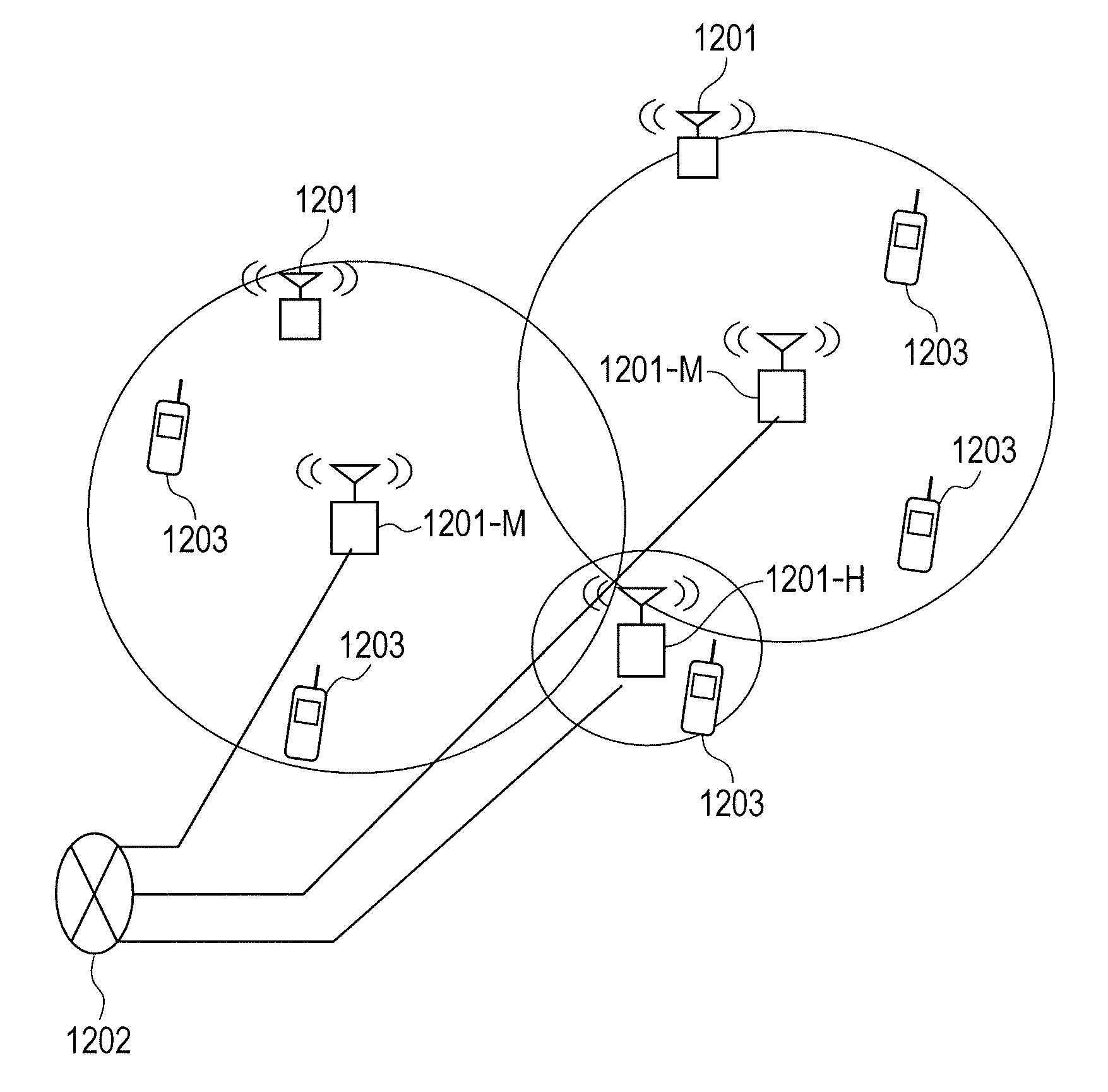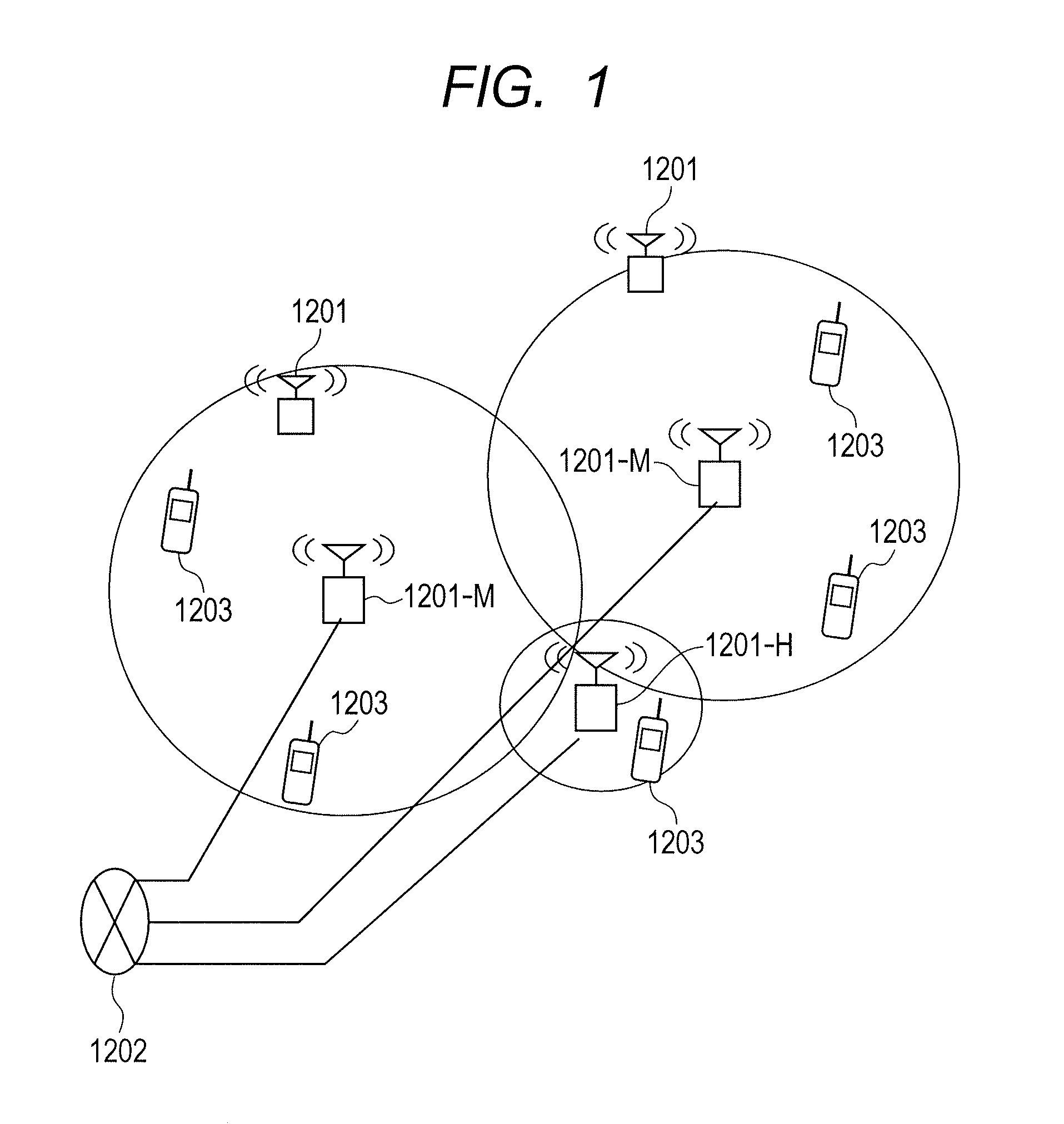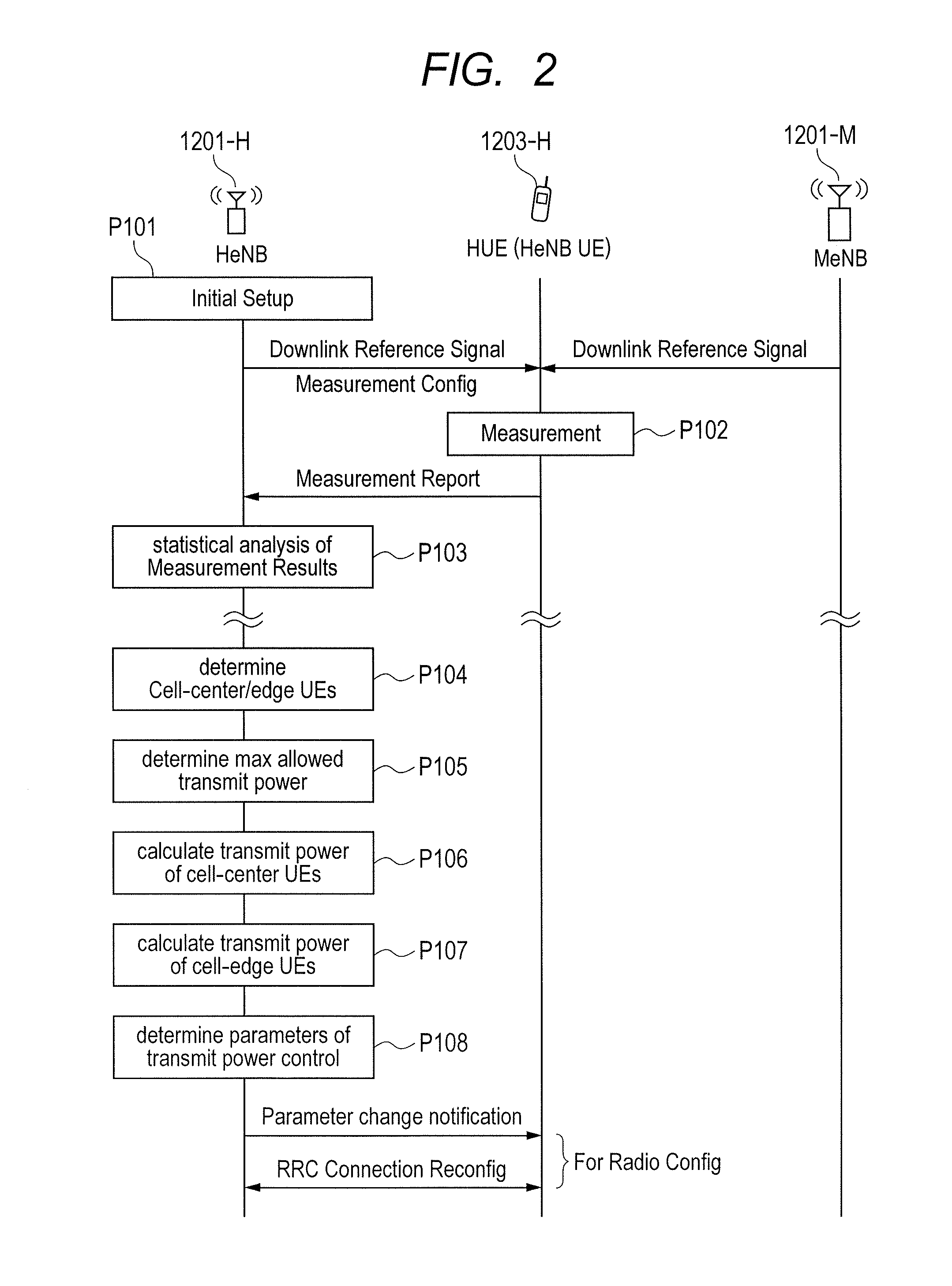Base Station and Cellular Wireless Communication System
a cellular wireless communication system and base station technology, applied in substation equipment, power management, wireless commuication services, etc., can solve problems such as full compensation, achieve high communication quality, reduce interference, and simplify hotspot installation in cellular wireless communication systems
- Summary
- Abstract
- Description
- Claims
- Application Information
AI Technical Summary
Benefits of technology
Problems solved by technology
Method used
Image
Examples
first embodiment
[0051]FIG. 1 describes the overall configuration of the cellular wireless communication system of the present embodiment.
[0052]The cellular wireless communication system of the present embodiment is comprised for example the macrocell base stations 1201-M and the femtocell base station 1201-H. The terminal 1203 can communicate with the macrocell base stations 1201-M and the femtocell base station 1201-H.
[0053]The base station 1201 provides communication among terminals 1203 located at separate positions, and data communication services between terminals and contents providers through a core network 1202 configured from host devices such as element management servers, mobility management elements, and gateways. Even among base stations however, the femtocell base station connects to the core network 1202 via ISP (Internet Service Provider) network.
[0054]The operation of the present embodiment is described next utilizing the sequence shown in FIG. 2.
[0055]The femtocell base station 12...
second embodiment
[0083]The technique disclosed in the first embodiment is described next as a detailed method assuming usage is applied to LTE. The condition in P102 of FIG. 2 required for the terminal 1203-H to perform measurement, may be set as a value in the initial setup in P101, and notification made by using an RRC message.
[0084]The measurement scheme utilizes a function for reporting the RSRP (Reference Signal Received Power) or RSRQ (Reference Signal Received Power) or RSRQ (Reference Signal Received Quality). Reporting the RSRQ allows reporting in a format that is a power ratio of the RSSI (Received Signal Strength Indication) including the interference power of the reference signals from the other cells, and the received signal of its own cell. The report may be in the form of either the RSRP or the RSRQ, or a collection of both. However, usually one of these formats is used due to the possibility that numerous configuration rewrites will occur, and a training period then set, and other ma...
third embodiment
[0092]The first embodiment deals with the case in P107 where the maximum allowed transmit power of the cell-edge terminal is small. If the maximum allowed transmit power is small, then the estimated communication quality at the femtocell base station 1201-H will sometimes be worse than expected.
[0093]In this case, the problem can be resolved by implementing control linked to the cell-edge terminal scheduling method to lower the power density, or by increasing the allocation resources. In base stations such as femtocells that accommodate few individuals, allocating a large quantity of resources is an easy to employ avoidance method.
[0094]In wireless communication systems such as LTE for example, resources can be allocated along the time axis and along the frequency axis. The OFDMA / SC-FDMA schemes are multiplexing methods for allocating terminals to each resource.
[0095]When increasing resource allocation along the frequency axis, lowering the power density on each resource and increas...
PUM
 Login to View More
Login to View More Abstract
Description
Claims
Application Information
 Login to View More
Login to View More - R&D
- Intellectual Property
- Life Sciences
- Materials
- Tech Scout
- Unparalleled Data Quality
- Higher Quality Content
- 60% Fewer Hallucinations
Browse by: Latest US Patents, China's latest patents, Technical Efficacy Thesaurus, Application Domain, Technology Topic, Popular Technical Reports.
© 2025 PatSnap. All rights reserved.Legal|Privacy policy|Modern Slavery Act Transparency Statement|Sitemap|About US| Contact US: help@patsnap.com



